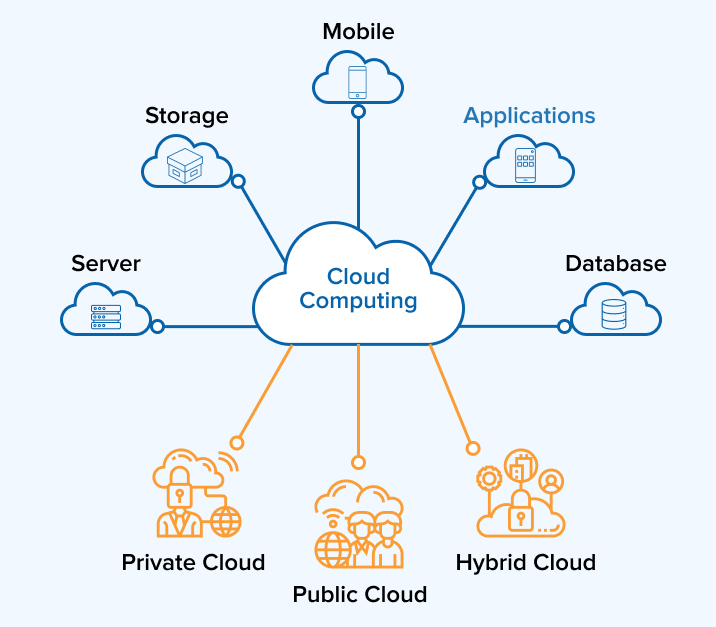Accomplish More with LinkDaddy Cloud Services: Enhancing Your Cloud Services Press Release Strategy
Accomplish More with LinkDaddy Cloud Services: Enhancing Your Cloud Services Press Release Strategy
Blog Article
Simplify Your Framework With Cloud Solutions
As companies navigate the ever-evolving landscape of technology and information administration, the duty of cloud solutions in streamlining facilities has actually ended up being significantly noticeable. How can businesses efficiently browse this shift and truly open the capacity of cloud services for streamlining their framework?
Benefits of Cloud Services
Cloud services use a streamlined technique to handling IT infrastructure, offering services with scalability, versatility, and cost-efficiency. One of the key advantages of cloud solutions is the scalability they use. Companies can conveniently scale their sources up or down based on demand, ensuring they only pay for what they use. This versatility is specifically beneficial for organizations with varying requirements or those experiencing development.
Additionally, cloud solutions get rid of the demand for companies to purchase costly software and hardware. This cost-efficiency is a substantial advantage, especially for little to medium-sized ventures seeking to lessen in advance costs. By utilizing cloud solutions, businesses can access top quality IT sources without the large cost related to conventional framework configurations.
Additionally, cloud solutions provide companies with the adaptability to access their information and applications from anywhere with a net connection. This level of accessibility enhances collaboration among teams, makes it possible for remote work, and boosts general productivity. The adaptability provided by cloud solutions equips businesses to adjust rapidly to transforming market conditions and client demands.
Price Savings and Scalability
Along with the operational benefits highlighted previously, the combination of cloud services into a business's infrastructure generates substantial expense savings and improved scalability. Cloud services use a pay-as-you-go design, permitting companies to scale sources up or down based on present needs, therefore avoiding the prices related to preserving excess ability. This flexibility enables companies to adjust quickly to rising and fall demands without sustaining unneeded costs.
In addition, cloud services remove the requirement for in advance investments in equipment and software program, lowering resources expenses. General expenses are also reduced as firms no more need to handle and keep physical servers, resulting in reduced power usage and IT staffing expenses. In addition, cloud services offer automatic updates and upkeep, making certain that the framework continues to be protected and current without requiring manual treatments.
Boosted Protection Actions
Carrying out stringent safety procedures is critical when incorporating cloud solutions right into a firm's infrastructure to guard sensitive data and make certain conformity with market policies. Cloud provider use improved security attributes such as information encryption, firewall software protection, and multi-factor verification to minimize cybersecurity dangers. Encryption assists protect data both at remainder and in transit, ensuring that only authorized users can access delicate information. Firewalls serve as an obstacle in between interior networks and exterior risks, surveillance and controlling outward bound and incoming network traffic. Multi-factor authentication click now adds an extra layer of protection by needing individuals to give multiple types of verification before accessing the cloud services.
Additionally, routine safety and security audits and conformity assessments aid identify vulnerabilities and guarantee adherence to industry requirements. Firms can additionally take advantage of features like automatic safety updates and real-time hazard monitoring provided by cloud company. By focusing on security procedures and staying proactive in resolving possible dangers, services can with confidence utilize cloud solutions while securing their valuable data from unauthorized access or violations.
Transitioning to Cloud Facilities
To efficiently integrate cloud solutions right into a firm's framework, a structured method that addresses the shift towards cloud-based remedies is crucial. Transitioning to cloud infrastructure includes cautious planning and implementation to ensure a smooth migration process - Cloud Services.
Once the analysis is full, a migration approach ought to be established. This technique must detail the timeline, resources, and responsibilities for moving each part to the cloud. It is necessary to communicate this plan clearly to all stakeholders to guarantee placement and lessen disturbances during the transition.
During the migration monitoring, testing and process are important to determine and address any type of concerns promptly. Routine checkpoints need to be developed to track progress and make required changes. Additionally, training for workers on making use of cloud solutions must be offered to make sure a successful change and take full advantage of the benefits of the new framework.
Finest Practices for Cloud Adoption
Effective adoption of cloud services depends upon the strategic positioning of company objectives with technical capabilities and organizational readiness. To guarantee a smooth transition to the cloud, organizations ought to begin by performing an extensive assessment of their existing infrastructure and determining which work are best fit for cloud migration. It is critical to include key stakeholders from different divisions in the decision-making process to gain buy-in and attend to any problems beforehand.
Another ideal technique for click here for more cloud adoption is to focus on protection and compliance. Organizations should carefully review the safety and security actions used by cloud provider and make sure my website that their data is protected according to sector standards and regulative needs. Implementing robust data security, accessibility controls, and routine safety and security audits can help reduce dangers related to cloud adoption.

Verdict

As companies browse the ever-evolving landscape of innovation and data management, the role of cloud services in simplifying infrastructure has actually ended up being progressively prominent - linkdaddy cloud services. How can organizations efficiently browse this shift and really open the possibility of cloud services for simplifying their infrastructure?
Cloud services supply a streamlined strategy to managing IT facilities, giving services with scalability, adaptability, and cost-efficiency. By making use of cloud solutions, companies can access high-quality IT resources without the substantial cost tag connected with typical facilities arrangements.
To guarantee a smooth transition to the cloud, companies need to start by performing a comprehensive evaluation of their present framework and recognizing which workloads are best matched for cloud movement.
Report this page